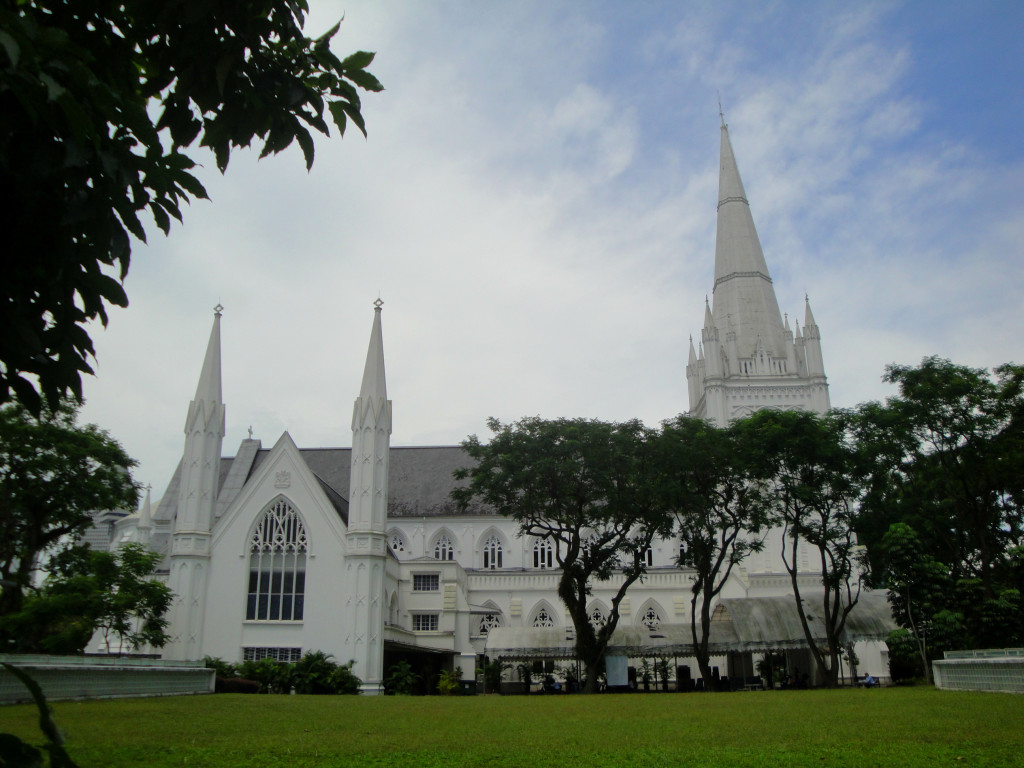Published on August 1, 2013 in the Singapore American Newspaper:

Surrounded by Singapore’s glittering malls, the white spire of St. Andrew’s Cathedral sticks out like a grandmother at a sweet sixteen party. And much like a grandmother, the church has been witness to a long and layered history. But rather than becoming obsolete amidst the rapidly developing shopping centers and trendy restaurants, St. Andrew’s has proven itself to be quite capable of evolving and adapting without losing sight of its mission.
In many ways, St. Andrew’s is a bastion of Singapore’s history. Though there is no burial ground at the church site, plaques line the walls of the main hall in memory of soldiers, nurses, and civilians from almost every conflict: from the mutiny of February 1915 through the Pacific War, during which the cathedral acted as an emergency hospital before the country fell to the Japanese in 1942. Regardless of one’s religious affiliation, it is hard to deny the important role St. Andrew’s has played throughout this island nation’s past. For example, in 1842 the church assisted in founding what is present-day St. Margaret’s, the very first all-girls school in Southeast Asia, despite widespread opposition to the young girls’ removal from slavery and to the education of women in general.
The story of St. Andrew’s began in 1823 when Sir Raffles chose the site of the cathedral to be the location of Singapore’s first Anglican church. The building was completed a decade later and named for the patron saint of Scotland due to the large contributions made by local Scottish businessmen. However, this original building was struck by lightning twice in 1838 and, deemed unsafe, it was demolished. The present building was consecrated in 1862, which made last year the cathedral’s 150th birthday. Although Christian congregations have recently been shrinking worldwide, St. Andrew’s still has a robust community of between 5,000 and 6,000 regular patrons who attend services at a variety of times in a variety of languages. During the late 1990s St. Andrew’s actually found itself unable to accommodate the growing volume of churchgoers, but since the site had been declared a national monument in 1973, no additions could be made to the church structure. Therefore it was decided that an underground worship hall would be built to service the growing congregation. Completed in 2005 the Cathedral New Sanctuary is a modern chapel kept cool underneath the Welcome Centre, which is snuggled up to the City Hall MRT entrance.
Like Singapore itself, the church is an amalgamation of international influences and it has consistently integrated both new technologies and diverse cultures. The neo-gothic architecture is distinctly English. The reredos (an ornamental alabaster screen with a mosaic depicting the birth of Jesus) was crafted in Italy. The sturdy wooden pulpit was made in Sri Lanka back when it was still called Ceylon. Each page of the Bibles nestled in the pews is split in half with English on one side and Mandarin on the other. St. Andrew’s is over a century older than the Republic of Singapore and acts as a living chronicle of the nation’s history. Hopefully this dynamic cathedral will continue to be an indomitable part of the cityscape for many years to come, regardless of the gleaming skyscrapers that spring up around it.
